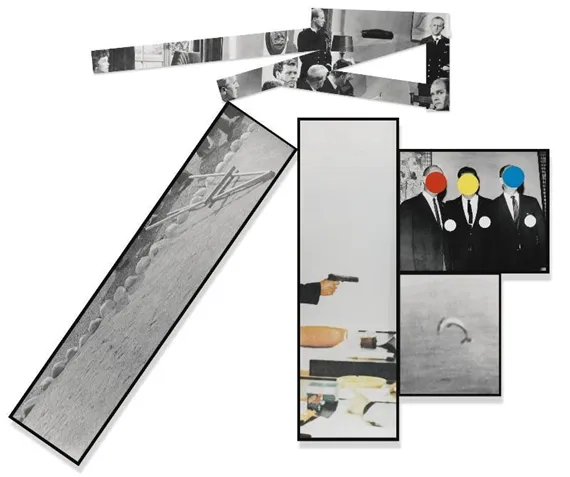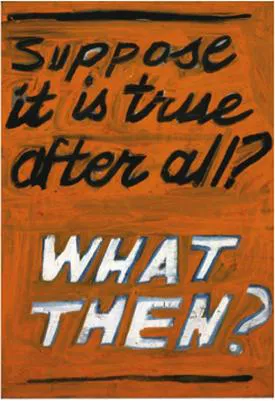Note: This interview was completed prior to the SAG-AFTRA strike.
Actor Timothy Olyphant discovered conceptual artist John Baldessari’s work while studying art at USC. The star of the FX limited series Justified: City Primeval couldn’t get enough of Baldessari's body of work, which challenged the way Olyphant thought about what art should be.
Along with Joseph Kosuth and Hans Haacke, the California-born Baldessari helped shape the conceptual art landscape in the 1960s. Baldessari pioneered the use of appropriated imagery to create art. He’d often blend photographs, text, and color as starting points for his work, which took the form of multiple media. He also became known for his signature use of colorful dots in photographic images, and text to offer commentary on contemporary culture.
Read More: Actor Timothy Olyphant on Elmore Leonard’s tiny target
Read More: Timothy Olyphant: Justified (The Treatment, 2011)
This segment has been edited for length and clarity.
I love the work of John Baldessari. When I was a fine art major at USC and studied art, discovering John Baldessari meant the world because it was the first time I saw paintings, canvases on a wall that I found so funny, but so smart and so unpretentious. The more I looked into him, and looked into his work, the more I just couldn't get enough. I just devoured it.
He went to those art fairs where people are selling their paintings and he said, “Paint this photograph and just stay true to the photograph.” Then when you see them all together, all paintings by different people, they look like they were all painted by the same person. I remember just being floored by that body of work. It challenged the way I thought about what art should be.

“The Fallen Easel” (1988) by John Baldessari is in exhibit at the Art Institute of Chicago. Courtesy of Wikiart
But one of my favorite things about my job is that I will sometimes be on a set collaborating with another actor or a director, and there's nothing about that person that makes me think we would connect in our lives. But then somehow through the work, we become more like best friends. If I see them years later, there is a connection that I just feel so grateful to have had, that we shared a sort of common language. I guess my point is that sometimes I'll see pieces, in this case like the Baldessari, and I think I would never think to make that. I'm not really interested in that kind of work. But I'm in love with it.
His work, like Elmore [Leonard’s], gave me permission to take seriously the things that I felt interested in, that it was okay to be funny, that it didn't make it less than.
They're not too far apart from one another. They're speaking a similar language. They kind of sneak up on you and knock you out a little bit, but they seduce you with a little bit of sly humor. [Baldessari] just meant a lot.

“Suppose it is true after all? WHAT THEN?” (1967) by John Baldessari. Courtesy of Wikiart
Read More: Remembering conceptual artist John Baldessari
Read More: These People and Animals Compete For Our Attention
Read More: John Baldessari at Jumex Museum and Sprüth Magers
Read More: Baldessari's Double Bill
